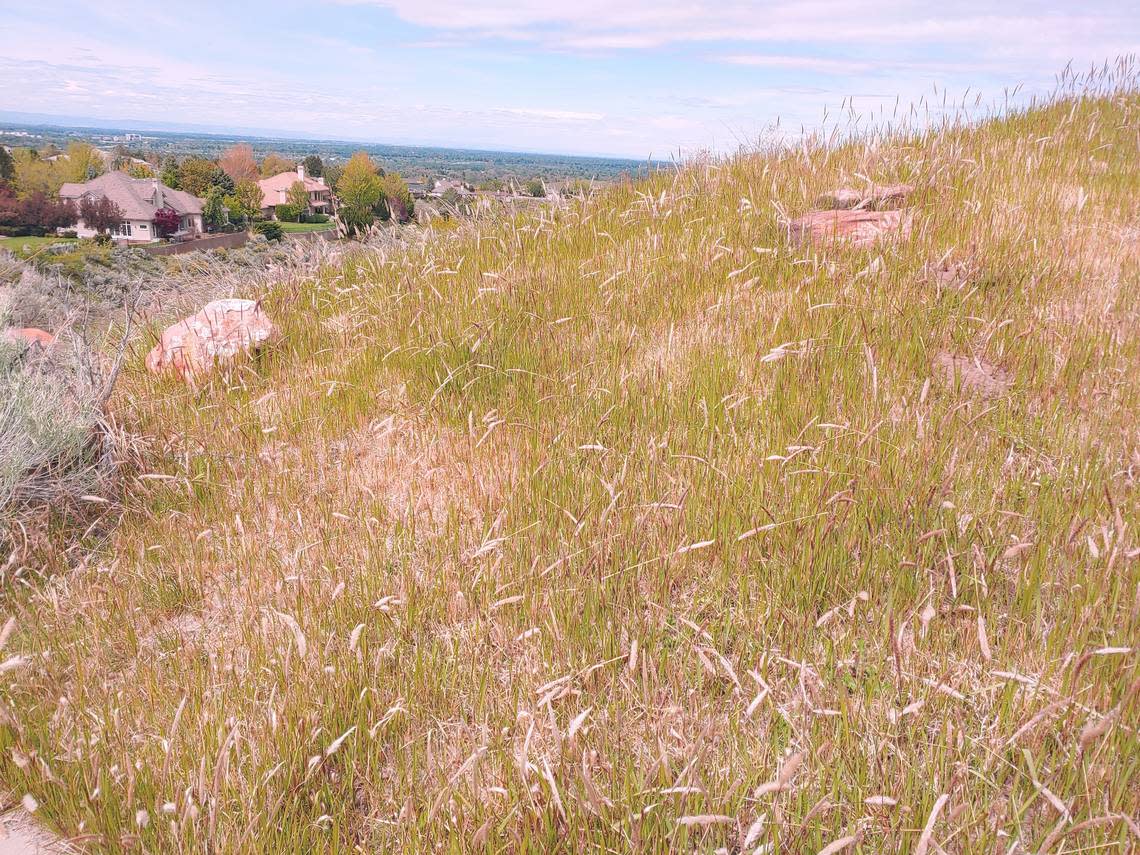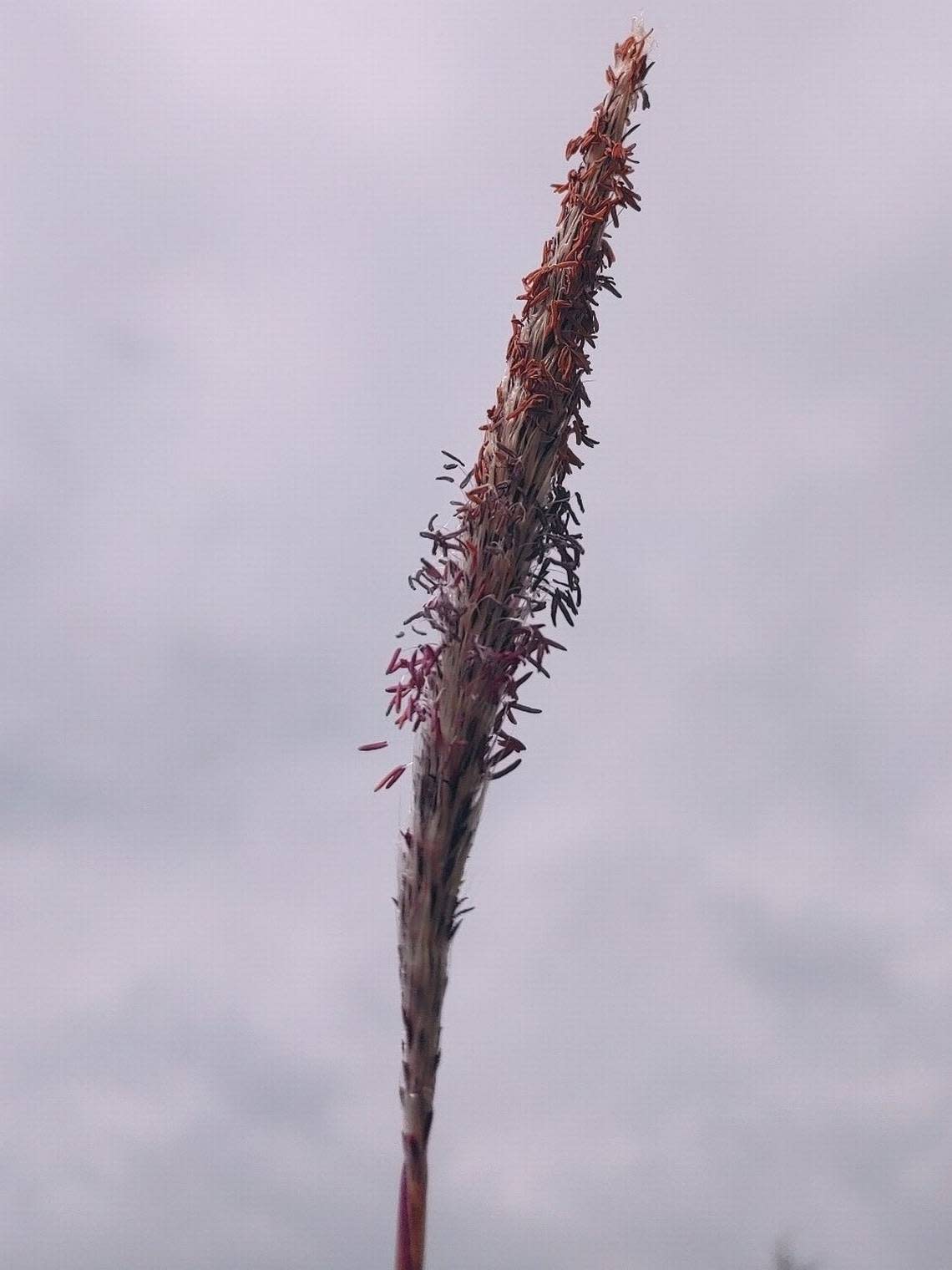An aggressive weed infesting Southeast US was just spotted in Boise. What you can do
One of the world’s worst weeds, infesting over 75% of Alabama’s counties, was spotted in Idaho in early May.
Cogongrass, or Imperata cylindrica, is a rapid-spreading perennial rhizomatous grass.
In June, the Idaho State Department of Agriculture issued a temporary order designating cogongrass as a noxious weed in Idaho, along with a subspecies, Japanese bloodgrass.
The weeds’ appearance in Boise’s Foothills is the first finding of this species in the Western United States, according to the Idaho State Department of Agriculture. It is also the first weed in Idaho to be listed as a noxious weed since 2020.
“We found it earlier this season, it was reported to us, we went to check it out,” said Noxious Weeds Section Manager Jeremey Varley of the State Department of Agriculture.
What the department found near Boise’s Camel’s Back Reserve was an escaped variant subspecies of cogongrass , which was observed to behave similarly to the main plant. It was reported by an Idaho resident the week of May 9.

“We felt that because it was showing that it was spreading and was poised to spread into the Camel’s Back area, that the state of Idaho would benefit from listing it before it can take off,” Varley said.
Cogongrass is listed as a federal noxious weed, a legal term used to identify any invasive, non-native plant that threatens agricultural crops, wildlife habitats or local ecosystems. It is illegal to transport noxious weeds between states in the U.S. without a permit.
However, because not all cogongrass subspecies are labeled as federal noxious weeds, some can easily be found and purchased at nurseries, garden centers and online retailers.
“You can find this grass looking online, you can find it pretty quickly, and it’s pretty readily available,” Varley said. “For the most part when they talk about it online, it’s supposed to be a sterile-type species where it’s not supposed to spread and kind of go outside of the planting area. But what we’ve seen with this is [that] it’s reverted back to just straight-up cogongrass and starting to spread and grow.”
First introduced to Louisiana accidentally in 1912, cogongrass is said to be native to Southeast Asia.
In 2003, it was ranked as the seventh-worst weed in the world by the USDA covering about 1.25 billion acres worldwide, according to the State Department of Agriculture.
This ranking is due largely to the weed’s danger to the environment. It is highly flammable, increasing the risk of wildfires. Animals cannot digest it, which could endanger wildlife.
The weed can grow up to 4 feet tall and spreads quickly, according to Timothy Prather, who sits on the Idaho Noxious Weed Control Association board of directors. Congongrass can spread up to 3 meters per year.
Alabama has experienced the weed’s rapid spread firsthand. More than 75% of Alabama’s counties are infested with cogongrass, with 1.25 million acres infested across Alabama, Mississippi and Florida.
Cogongrass has primarily affected the Southeast United States. Before its detection in Idaho, the closest reported appearance was in eastern Texas.
“This Boise foothill would be the biggest jump for that particular species, when you consider from Southeast Texas all the way up to Idaho,” Prather said.
The 15-month order designating cogongrass as a noxious weed in Idaho is temporary. During those 15 months, negotiations open to the public will determine whether the species will move toward being added to the state’s permanent list of noxious weeds.
“The public can comment on whether they feel that the species deserves to be on the list or not on the list,” Varley said. “It will then go through the legislative process to be voted on whether it should be added or not to the list.”
In the time leading up to the 15-month mark, the department’s priority is to identify weed growth as early as possible and keep it from spreading.
“Right now it’s only a tenth of an acre of a known population in the entire state of Idaho,” Varley said. “[It’s the] best time to get the weeds controlled.”
Cogongrass can be recognized by its unusually long leaves with yellow-green tips, serrated sides that feel sharp to the touch, off-center veins and underground roots. The seed head on a cogongrass plant can have dandelion-like seeds that make them appear fluffy.

Varley says the best thing to do once you think you’ve recognized a patch of cogongrass is to call your local week superintendent. Once the grass is confirmed to be cogongrass, the department can provide guidance toward eradication.
“What we expect to hear over the first little bit of this is, we expect people to start saying, ‘Hey, I’ve got a plant… what do I need to do to control it in my landscape?’” Varley said.
The last noxious weed infestation the Idaho State Department of Agricultural experienced was with water hyacinth in Twin Falls, which has not returned since the department’s initial efforts to eradicate the weed in 2012.
“So it kind of shows that when you get stuff like this, you know, started while it’s just small, it can have a much better beneficial return for Idaho,” Varley said.
